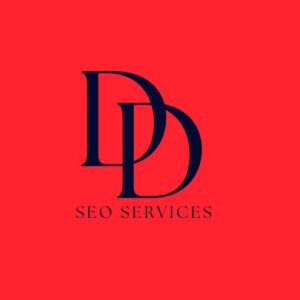B2B Conversion Rate Optimization is crucial for transforming website traffic into meaningful leads. It’s a method to enhance your website’s ability to convert visitors into marketing qualified leads (MQLs). In B2B, this involves a long and complex buyer’s journey where prospects revisit your site multiple times.
Here’s what you need to know to get started:
- Website Traffic: Attracting visitors is only half the battle. What happens next is vital.
- Conversion Rate: On average, only 2% of B2B website visitors convert. This percentage needs to improve.
- MQLs: Your goal is to turn these visitors into Marketing Qualified Leads.
- Buyer Journey: B2B buyers engage with your site throughout their entire decision-making process.
Understanding how to optimize these factors can dramatically increase your conversion rates.
Understanding B2B Conversion Rate Optimization
What is B2B Conversion Rate Optimization?
B2B Conversion Rate Optimization (CRO) is the art and science of improving your website to increase the percentage of visitors who complete a desired action. This action could be anything from requesting a demo, filling out a contact form, completing a purchase, or downloading a whitepaper.
Think of it this way: You’ve already attracted visitors to your site. Now, your job is to convince them to take the next step. And that’s where CRO comes into play.
Why is it important? Well, on average, only 2% of B2B website visitors convert. That’s shockingly low given the time, effort, and budget spent driving traffic to your site. CRO aims to boost this percentage, turning more of your hard-earned visitors into Marketing Qualified Leads (MQLs) and, eventually, customers.
How to Calculate Your Conversion Rate
Calculating your conversion rate is straightforward:
- Identify the number of conversions: This is the number of visitors who completed your desired action.
- Count the total number of visitors: This is the total number of people who visited your site.
- Do the math: Divide the number of conversions by the total number of visitors. Then multiply by 100 to get a percentage.
Here’s the formula:
[ \text{Conversion Rate} = \left( \frac{\text{Number of Conversions}}{\text{Total Number of Visitors}} \right) \times 100 ]For example, if you had 50 conversions out of 2,000 visitors, your conversion rate would be:
[ \left( \frac{50}{2000} \right) \times 100 = 2.5\% ]Improving Your Website to Increase Conversions
Now that you know what CRO is and how to calculate it, let’s talk about how to improve your website to boost that conversion rate.
- Understand Your Audience: Who are they? What problems are they trying to solve? Use both quantitative data (like exit rates and bounce rates) and qualitative data (like user surveys) to get a full picture.
- Optimize User Experience: Ensure your website is easy to navigate. Clear headings, intuitive layouts, and fast load times are crucial.
- Craft a Compelling Value Proposition: Make it immediately clear what you offer and why it’s valuable.
- Use Impactful Calls-to-Action (CTAs): Your CTAs should stand out and compel visitors to take the next step. Experiment with different wording, colors, and placements.
- Leverage High-Quality Content: Blog posts, case studies, and videos can engage visitors and guide them through the buyer’s journey.
- Monitor and Adjust: Use tools like Google Analytics and Hotjar to track performance and identify areas for improvement.
By focusing on these elements, you can significantly improve your website’s conversion rate, turning more visitors into leads and ultimately customers.
Key Elements of a Successful B2B CRO Plan
Deciphering the B2B Buyer’s Journey
Understanding the B2B buyer’s journey is crucial in optimizing conversion rates. Unlike B2C, B2B transactions often involve multiple stakeholders and longer decision cycles. A typical buyer’s journey includes:
- Brand Discovery: Where potential clients first learn about your brand.
- Consideration: Evaluating your offerings against competitors.
- Decision: Finalizing the purchase decision with input from various stakeholders.
Mapping out this journey helps in creating targeted strategies for each phase, ensuring a seamless transition from discovery to transaction.
Crystal-Clear Value Proposition
A clear value proposition is essential. It should immediately communicate what makes your offering unique and how it addresses the visitor’s needs. Focus on tangible benefits rather than just features. For example, instead of saying “Our software has advanced analytics,” say “Our software helps you make data-driven decisions quickly.”
User Experience Excellence
A seamless digital journey is vital for conversions. Regularly audit your website to:
- Optimize for Speed: Slow-loading pages can lead to high bounce rates.
- Remove Friction Points: Simplify forms and navigation.
- Ensure Intuitive Navigation: Make it easy for visitors to find what they need.
Tools like [Google PageSpeed Insights] and [Hotjar] can help identify and fix these issues.
Content That Engages and Converts
High-quality content is a cornerstone of effective B2B CRO. Your content should be:
- Informative: Blog posts that address industry trends and pain points.
- Engaging: Videos and webinars that capture attention.
- Guiding: Case studies that show real-world applications and success stories.
This type of content not only attracts visitors but also guides them through the buying cycle.
Always Monitor & Assess the Impact
Monitoring and evaluating your CRO efforts are essential for continuous improvement. Use tools like [Google Analytics] to track KPIs and identify areas for adjustment. Regular evaluations help in:
- Pinpointing Challenges: Identify where visitors drop off.
- Adjusting Strategies: Make data-driven changes to improve performance.
- Measuring Success: Compare results against set KPIs to evaluate the impact.
By consistently monitoring and refining your approach, you can ensure sustained growth and better conversion rates.
Next, we’ll explore the Tools for Effective B2B Conversion Rate Optimization, including Webeo, Google Analytics, and more.
Tools for Effective B2B Conversion Rate Optimization
Webeo
Webeo is a powerful tool for website personalization. It allows you to segment your audience and tailor content based on the visitor’s industry, company size, and more. This way, your prospects see only the relevant information, improving their experience and increasing the chances of conversion.
For example, if a visitor from a large corporation lands on your site, Webeo can adjust the content to highlight solutions that cater to big businesses. This level of personalization can significantly enhance user engagement and retention.
Google Analytics
Google Analytics is essential for data collection and gaining business insights. It helps you understand your visitors’ behavior, which pages they visit, and how long they stay. By analyzing this data, you can identify which parts of your site are performing well and which need improvement.
Monitoring metrics like bounce rates and user engagement can reveal potential issues. For instance, if a high number of users leave after viewing a specific page, it might indicate that the content isn’t meeting their needs. Using this data, you can make informed decisions to optimize your site and improve conversion rates.
Hotjar
Hotjar goes beyond numbers by providing website analytics through heatmaps and on-site surveys. Heatmaps visually represent where users click, scroll, and spend the most time on your site. This helps you understand their interaction patterns and identify areas that capture or lose their attention.
On-site surveys are another valuable feature. They allow you to collect qualitative data directly from your visitors, offering insights into their experiences and pain points. By combining these insights, you can make targeted adjustments to enhance user engagement and drive conversions.
Heatmap Tools
Heatmap tools like Crazy Egg and MS Clarity offer a visual representation of user interactions on your web pages. They show you where users click, how far they scroll, and what elements they ignore. This data is crucial for understanding engagement patterns and optimizing your site layout.
For instance, if users frequently click on an image thinking it’s a button, you might want to add a clickable link there. By making these small but impactful changes, you can improve the overall user experience and boost your conversion rates.
Using these tools effectively can transform your B2B website into a high-converting platform. Next, let’s delve into the Common Barriers to Successful B2B Lead Generation and how to overcome them.
Common Barriers to Successful B2B Lead Generation
Not Focusing on Quality Data
Having good-quality data is like having a solid foundation for making informed decisions and building successful strategies. Flawed data can lead to poor decision-making, negatively impacting your user experience and overall conversion rates.
For example, if your data indicates that a certain demographic prefers one type of content but this information is inaccurate, you might waste resources creating the wrong content. Always ensure your data is accurate and up-to-date to make better decisions.
Misunderstanding The Target Audience
Understanding your target audience is essential for a successful B2B lead strategy. If you don’t know your audience well, creating messages that catch their attention is hard. This can make your marketing campaigns ineffective, leading to lost opportunities and decreased conversions.
For instance, a software company might think their audience values cost-saving features the most, when in reality, they care more about ease of integration. Misunderstanding this can result in campaigns that don’t resonate, reducing engagement.
Poor Use Of Digital Channels For Outreach
Digital platforms hold immense potential when used correctly to reach prospects. However, improper use of these tools could potentially turn against businesses instead of aiding them. Poorly timed emails, irrelevant content, and ineffective social media strategies can annoy recipients, lowering engagement levels and adversely affecting conversion rates.
For example, sending too many emails can lead to higher unsubscribe rates. To avoid this, refine your digital outreach based on sound research, customer behavior patterns, and industry best practices.
Inadequate Lead Nurturing
Inadequate lead nurturing can result in missed opportunities for B2B businesses. Given the longer decision-making cycles in B2B buying, not all leads are immediately ready to convert. A well-defined lead nurturing strategy is essential to keep potential leads engaged over time.
For example, a company that sends regular, informative content addressing specific pain points can build a relationship of trust. This increases the likelihood of conversion when the lead is ready to make a decision.
To avoid these pitfalls, continuous refinement of your strategies based on accurate data, a deep understanding of your target audience, effective use of digital channels, and a robust lead nurturing plan is imperative.
Next, we’ll explore Actionable Strategies to Boost Your B2B CRO and how to implement them effectively.
Actionable Strategies to Boost Your B2B CRO
The Power of Clear Headings
Clear headings are your website’s front line. They help users and search engines understand what your page is about. Using H1 tags correctly can improve your SEO and make navigation easier for visitors.
For example, if you’re offering a free eBook on industry trends, a clear H1 heading like “Download Our Free Industry Trends eBook” tells users exactly what they’ll get.
Use Impactful Call-To-Action
Your Call-To-Action (CTA) buttons should be strategic and compelling. Use actionable language that creates a sense of urgency. For instance, “Get Your Free Trial Now” is more effective than “Sign Up.”
Strategic CTAs placed at the right spots can guide users through your sales funnel. Test different colors, sizes, and placements to see what works best.
Pivotal Role Of High-Quality Content
High-quality content is essential for B2B conversion rate optimization. It sets you apart from competitors and builds credibility. Think insightful blog posts, informative webinars, and comprehensive eBooks.
For example, a blog post addressing industry trends can attract more traffic. Webinars featuring experts can engage your audience, and eBooks providing actionable advice can lead to higher conversions.
Leveraging Testimonials & Case Studies
Customer reviews can influence up to 90% of purchasing decisions. Including testimonials and case studies on your site builds trust, which is crucial in B2B relationships.
For instance, showcasing a case study where your product helped a client achieve significant results can be very compelling. It shows potential clients that you have a proven track record.
Ensuring Mobile Responsiveness
More than half of the global population uses smartphones to access the internet. Ensure your website is mobile-friendly to capture this audience. Around 42% of people researching products for their businesses use mobile phones.
Mobile design should be intuitive. Menus should be easy to navigate, and important information should be accessible on all screen sizes. This enhances user experience and keeps potential customers engaged.
Enhancing On-Site Conversion with Live Chat
In today’s world, users expect immediate responses. Implementing a live chat feature can significantly boost your conversion rates by providing real-time support.
Live chat can address potential barriers to purchase instantly, guiding visitors through your sales funnel more effectively. It improves user satisfaction and increases the likelihood of conversion.
Elevate Site Speed
A slow-loading website can result in higher bounce rates. Research shows that 53% of mobile users abandon sites that take longer than three seconds to load.
Use tools like Google PageSpeed Insights to analyze and improve your site speed. Techniques like image compression and browser caching can make a big difference. Faster loading times enhance the overall user experience and reduce bounce rates.
Frequently Asked Questions about B2B Conversion Rate Optimization
What is a good conversion rate for B2B?
A good conversion rate for B2B can vary, but the acceptable average is typically between 2% and 5%. Some industries, like professional services, can see rates as high as 12.3%. On the lower end, B2B tech often struggles with rates around 1%.
Understanding your industry benchmarks is crucial. For example, B2B eCommerce has an average conversion rate of 4.0% for organic searches, while B2B services average 7.0%. Knowing these benchmarks helps you set realistic goals and measure your performance against competitors.
How do you optimize conversion rate?
Optimizing your conversion rate involves a process known as Conversion Rate Optimization (CRO). Here’s a simple breakdown:
- Collect User Data: Use tools like Google Analytics and Hotjar to gather data on user behavior. Look for high-traffic pages with low conversion rates or areas where users drop off.
- Develop Hypotheses: Based on the data, create hypotheses on what changes could improve conversions. For example, you might hypothesize that changing the color of your CTA button will increase clicks.
- Run Tests: Implement A/B tests to compare the effectiveness of different changes. Tools like Webeo can help personalize experiences for different segments.
- Analyze Results: Review the test results to see if your changes had a positive impact. Use this data to make informed decisions about further optimizations.
- Iterate: CRO is an ongoing process. Continuously test and refine your strategies to keep improving your conversion rates.
Is Conversion Rate Optimization worth it?
Absolutely! Conversion Rate Optimization can lead to significant business growth. By improving your website’s ability to convert visitors into qualified leads, you can lower your cost per acquisition and increase your ROI.
Here are a few benefits:
- Increased Qualified Leads: Better conversion rates mean more leads without increasing your traffic.
- Better User Experience: Optimizing your site often improves overall user satisfaction, keeping visitors engaged longer.
- Higher Revenue: More conversions directly translate to more sales and revenue.
Investing in CRO is not just about immediate gains; it’s about building a sustainable, efficient marketing strategy that adapts to user behavior and industry trends.
Conclusion
At D&D SEO Services, we understand that B2B conversion rate optimization is not a one-size-fits-all approach. Every business is unique, and so are its challenges and opportunities. That’s why we offer personalized solutions tailored to meet your specific needs.
Our team employs data-driven strategies to ensure that every decision is backed by solid evidence. We use tools like Webeo for personalized website experiences, Google Analytics for in-depth insights, and Hotjar for understanding user behavior. This allows us to create a comprehensive plan that addresses every aspect of your conversion funnel.
By focusing on business growth, we aim to not only improve your conversion rates but also enhance the overall user experience. Our strategies are designed to attract more qualified leads, streamline your sales funnel, and ultimately increase your revenue.
Partnering with D&D SEO Services means investing in a sustainable, efficient marketing strategy that adapts to the ever-changing digital landscape. Let us help you turn your website visitors into loyal customers.
Ready to skyrocket your conversion rates? Contact us today to learn how we can elevate your B2B CRO strategy.








